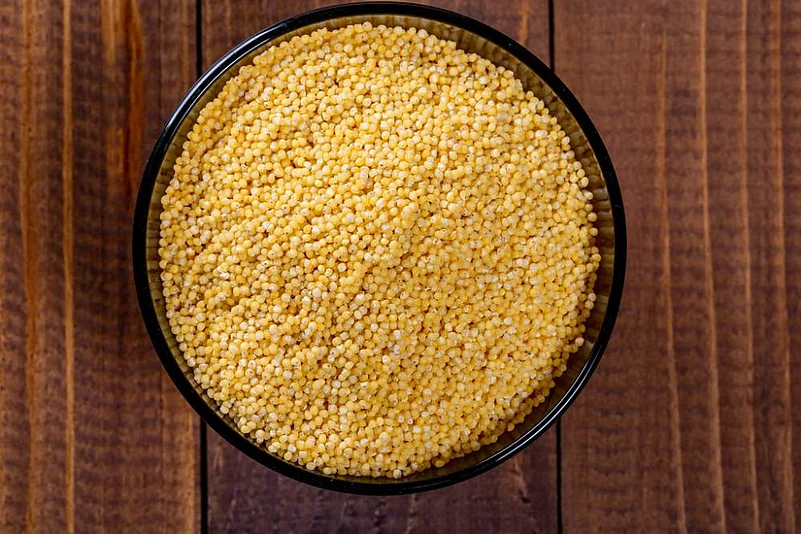Millets are a group of small-seed grasses grown in semi-dry areas of Asia and Africa. The crop can withstand high temperature and dry conditions, and is favoured due to its short growing season. Consuming whole grains cereals and millets on a regular basis may help lose weight, since they have a rich content of fiber and other bioactive compounds.
TYPES OF MILLETS
Wheat and rice may be amongst the most popular grains, but millets such as sorghum (jowar), pearl millet (bajra), foxtail millet (kangni), finger millet (ragi), Barnyard millet, Kodo mille, Little Millet, Proso Millet are amongst the healthiest millet grains available.
English Name Hindi Name
Sorghum Jowar
Finger Millet Nachani /mundua
Kodo Millet Koden/Kodra
Foxtail Millet Kangni/Rala
Little Millet Kutki
Barnyard Millet Jhangora
Pearl Millet Bajra
Whole millets and millet flours are naturally gluten-free sources and a great alternative to rice and wheat. India is one of the largest producers of millet counting to 11 million tonnes every year, followed by Africa and China. Let us know a bit more about the types of millets grown in India. In first part of our series on millets, we will discuss benefits of sorghum, popularly known as jowar.
Sorghum (Jowar)
Sorghum grain and its flour is a great gluten-free product and can be used as a substitute for wheat. The flour contains a smooth texture and a mild sweet taste, and helps in weight loss. It is also a great source of protein. 3/4 of a cup of sorghum provides 8 grams of protein. Below are other benefits of sorghum:
•For weight loss: It helps in weight loss since it's high in fiber content, which helps in regular bowel movement by flushing toxins out of the body.
•Manage diabetes: It slows down sugar absorption into the bloodstream, which helps prevent over-eating. It helps regulate your blood sugar levels.
•Fights inflammation: It is high in antioxidants which are known to fight inflammation that is considered a leading cause of all metabolic diseases.
•Rich in micronutrients: It contains zinc, potassium, magnesium, phosphorus, copper, manganese, calcium, selenium, thiamine, riboflavin, niacin, folate, vitamin B6, vitamin E, fatty acids and amino acids.
Sorghum for diet
In the form of flour, can be used to make chapattis, breads, pancakes, waffles, cookies, etc. You can also use it as a thickening agent for gravy and sauces. You can also consume it in the form of cereals.
(Bipasha Das is a certified health coach and nutritionist. She runs a diet and wellness clinic ‘Sugati’. She has been awarded Most Recommended Nutritionist of the Year 2018-19 by Brands Impact. She has worked with top hospitals, and is a life member of the Indian Dietetic Association and on the panels of renowned corporate houses like Ericsson, GE Power. Bipasha is working with Municipal Corporation of Delhi - Public Health Department( South Zone) as a consultant, and creating awareness programmes on Women and Children Health, Health for Public Health Workers, Office Sedentary Workers etc.
*Answers are based on general queries. Please contact a professional for any personal treatment.)
















